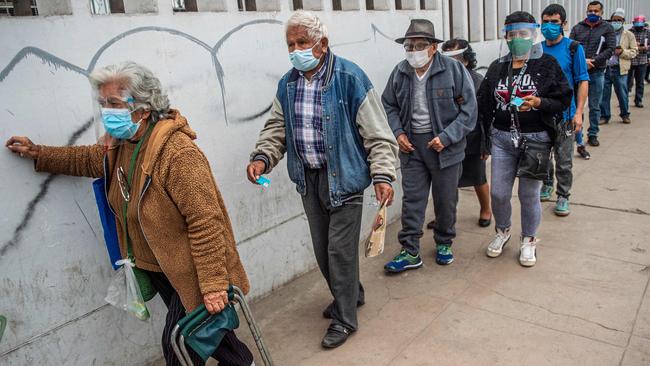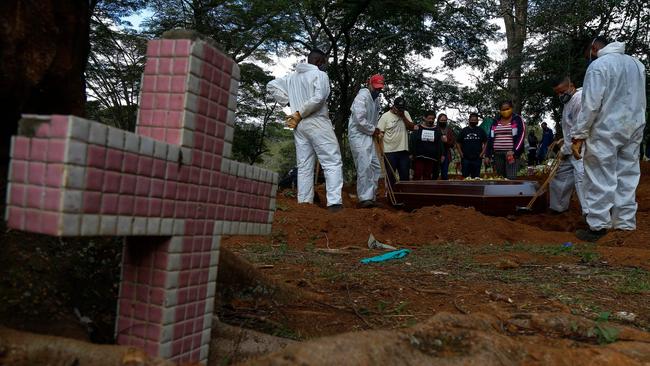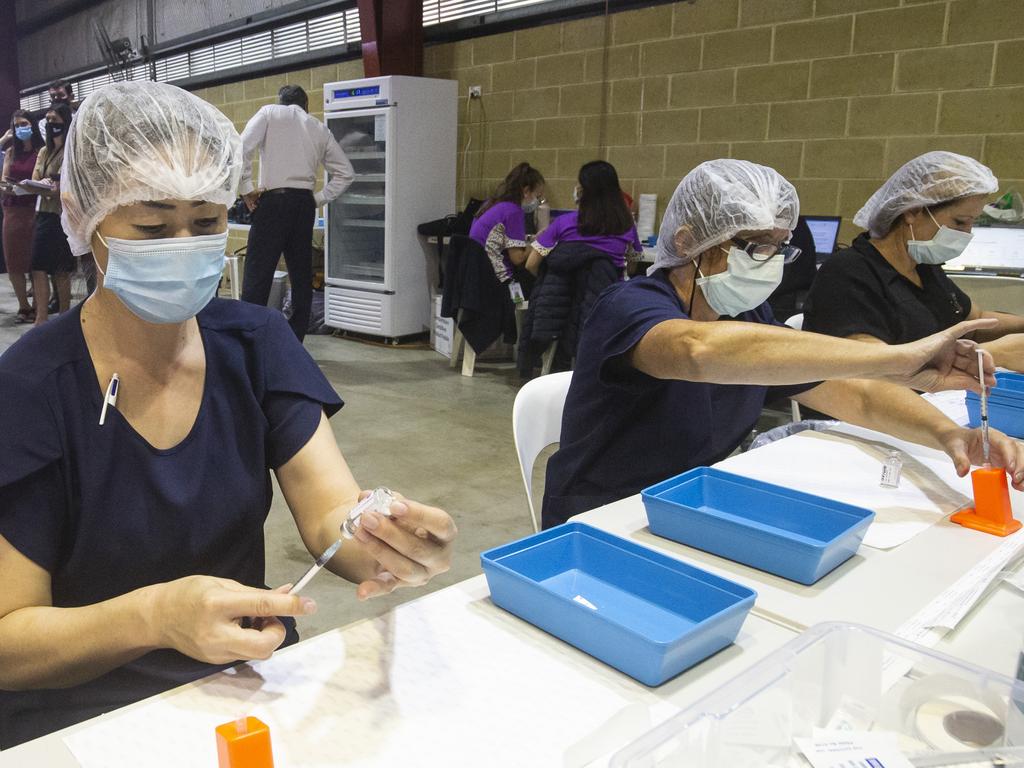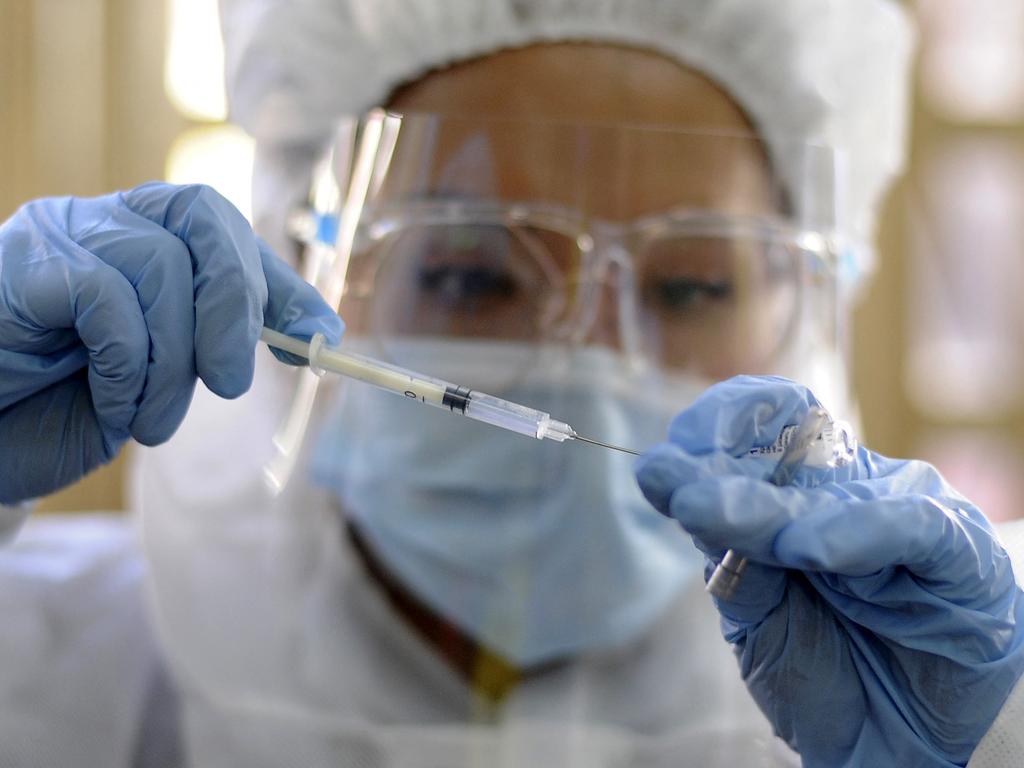COVID-19 Variant Tears Through South America
Countries that recently had coronavirus under control are seeing deaths surge as an aggressive variant strikes.

An aggressive coronavirus variant from Brazil that has been detected in more than 30 nations is now raging across South America, prompting deaths and hospitalisation to soar even in countries that have widely administered vaccines.
Elmiria Camilo, a 53-year-old seamstress in the tranquil city of Tacuarembó, Uruguay, had already received her first shot of the Chinese CoronaVac vaccine when she came down with a sore throat earlier this month. A week later she was dead.
Doctors said they believe Ms Camilo was one of the latest victims of the P.1 variant that has turned Uruguay, a nation of 3.5 million, into one of the world’s worst COVID-19 hot spots.
“I never thought I would lose my mother like that,” said Ms Camilo’s daughter, Nancy Lefebre, who bid farewell in a video call before her mother died at a hospital’s intensive-care unit. “I wish I could have seen her just one more time.”
The surge offers lessons for the rest of the world. The P.1 variant has spread to countries including Canada, where in the province of British Columbia, officials have recorded 2062 cases of P.1 as of April 26, up from 974 as of April 9. Turkey and Hungary have struggled with large surges partly fuelled by the more infectious UK variant. Doctors in India are studying whether new variants there might be adding to a record rise in cases and deaths. One variant, B.1.617, has already popped up in the US and 18 other countries.

Once extolled for limiting the spread of the coronavirus in a region battered by the pandemic, Uruguay in the past two weeks has the highest number of COVID-19 deaths per capita anywhere outside Europe. About 420 people died from the disease in the seven days ended April 26, more than twice the number of fatalities in the whole of 2020. P.1 is estimated to be responsible for three out of four new infections.
While a third of the population in Uruguay received at least one dose, only 15 per cent have been fully vaccinated. For most people 70 years old or younger, the country is using Sinovac’s CoronaVac, which has been shown to be 16 per cent effective after the first dose.
In Peru, one of the world’s hardest-hit countries, a second surge made April the most deadly month since the pandemic began, often with more than 400 fatalities a day. Health officials said the country of around 30 million is awash in variants, including P.1, which medical authorities said caused 40 per cent of infections in Lima. Authorities are also studying a new strain called C.37, which appears to have originated in Peru and is also raising concerns in Argentina, Chile and Ecuador.
Colombia, a country of 50 million, is seeing occupancy in intensive-care units hit 90 per cent in the capital, Bogotá, with hospitals in other cities at their breaking point.
Doctors said some people, weary of restrictions or emboldened after the first shot of a two-shot vaccine, let their guards down, helping the virus proliferate. They add that such behaviour can’t fully account for the surge.

“The velocity of the new infections tells us that this is not only about people lowering their guard and holding get-togethers,” said Luis Jorge Hernandez, an epidemiologist at the University of the Andes. “There’s an external factor here. It has to be the new strains. There is no other explanation.”
Many of the countries in South America that are experiencing a sharp rise in cases and deaths have for the most part not done extensive genomic sequencing to determine how many have been infected by P.1. A hypothesis is that the variant from Brazil, for weeks one of the world’s hardest-hit countries, is driving the pandemic.
People’s behaviours haven’t changed substantially, yet cases and deaths have jumped, according to Daniel Salinas, Uruguay’s Health Minister.
“It’s very simple to understand what’s happening — it’s the Brazilian variant, P.1, it’s infecting the whole continent,” he said in an interview.
As in Chile, which delivered a high percentage of vaccines to its people, Uruguay’s success until recently in dealing with the pandemic encouraged people to grow complacent just as P.1 hit, researchers said. A problem for both countries is that the CoronaVac vaccine they are administering is one of the world’s least effective.
Ms Lefebre, who lost her mother this month, said her father developed a much milder case of COVID-19 after a second dose of CoronaVac.
The vaccines “generated a feeling of false security,” said Gregorio Iraola at the Pasteur biomedical research centre in Uruguay’s capital, Montevideo. “These behavioural and biological factors combined in an explosive way.”
Marta Roman, supervisor of a vaccination centre in Uruguay near the border with Brazil, said she saw a surge in the number of people who were infected with COVID-19 between doses, mistakenly believing themselves to have immunity when they didn’t.

P.1 is up to 2.2 times more contagious and as much as 61 per cent more capable of reinfecting people than previous versions of the coronavirus, according to recent studies in Brazil. Researchers are still investigating whether the strain is more lethal. They are also trying to determine with certainty how well vaccines work against P.1, though preliminary testing is promising.
Epidemiologists are also tracking other Brazilian variants, warning that the country’s high infection rate has made it a breeding ground for mutations. Among the most worrying is a new strain from the state of Minas Gerais, which shares some of the mutations found in both P.1 and the South African variant.
While the rate of new infections and deaths has slowed in Brazil over the past couple of weeks, about 100 Brazilians are still dying every hour from COVID-19, more than double the rate in July.
The P.1 variant had no trouble crossing into Uruguay from Brazil. A narrow tree-lined road is all that separates the Uruguayan border town of Rivera from the Brazilian community of Santana do Livramento. With no immigration controls, residents cross freely as if in a single town — shopping, working, dating and even marrying across the border.
Sure enough, Rivera was one of the first places in Uruguay to be hit by P.1. Younger people suddenly started to get seriously ill, a situation earlier detected in Brazil. Doctors in Rivera also noticed patients getting sick faster and taking longer to recover.
To exclude Brazilians who might be carrying P.1, Rivera shut down its duty-free shops, the town’s main source of income, in March.
“We’re fighting a war against an invisible enemy, a very powerful enemy, ” said Ciro Ferreira, director of Tacuarembo’s public hospital. “We’ve never faced such a difficult situation as the one we are living through today.”
Gaston Bordagorria, a 52-year-old journalist from Tacuarembo, was among those who got sick, spending 10 days hooked up to oxygen in a hospital this month.
“I was so scared I was going to die,” he said. “I was afraid I would not be able to say goodbye to my parents, to my children.”

Brazil has fully vaccinated only 6 per cent of the population, and numerous Brazilians with Uruguayan passports have crossed the border to be inoculated.
Fabricia Ribeiro, 33, who was terrified of catching P.1, said she drove for six hours from her home in Brazil to be vaccinated in Rivera. Her neighbour, also 33, was put on a ventilator after being diagnosed with P.1, she said.
With three million doses of CoronaVac and three million of the Pfizer-BioNTech shot, Uruguay has opted to give the Pfizer doses to health workers and anyone over the age of 70, and administer CoronaVac to everyone else. The two-dose Pfizer inoculation is at least 97 per cent effective in preventing symptomatic disease and death, according to data gathered by the Israel Ministry of Health. The two-dose CoronaVac vaccination is 67 per cent effective in preventing the disease and 80 per cent effective in preventing death, according to a recent study in Chile.
“The Sinovac vaccine is going to those who are younger and less likely to die,” said Mr. Salinas.
Marco Antonio Gorgoroso, a 45-year-old waiter, said he would have preferred to receive the Pfizer vaccine had he been given the choice. “But whatever the government offers, we have to take,” he said. “It’s a privilege just to have a vaccine.”
The Wall Street Journal







To join the conversation, please log in. Don't have an account? Register
Join the conversation, you are commenting as Logout